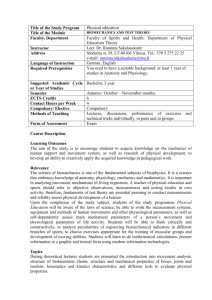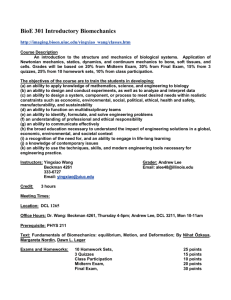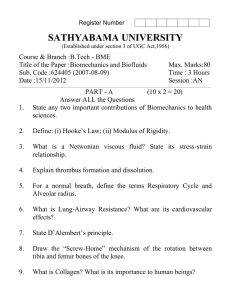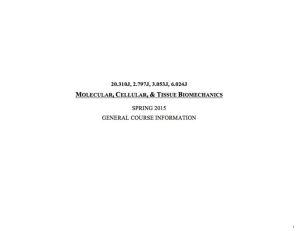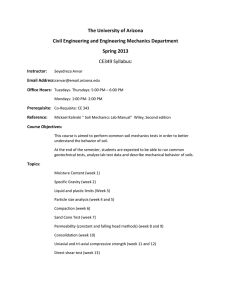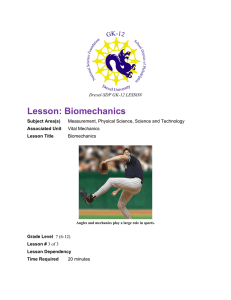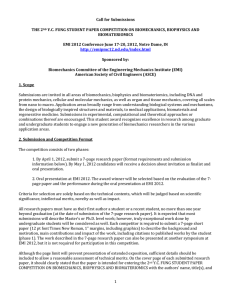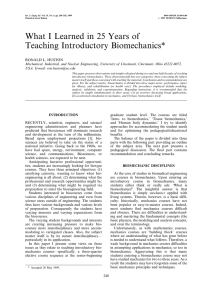Curricular Unit: Vital Mechanics
advertisement
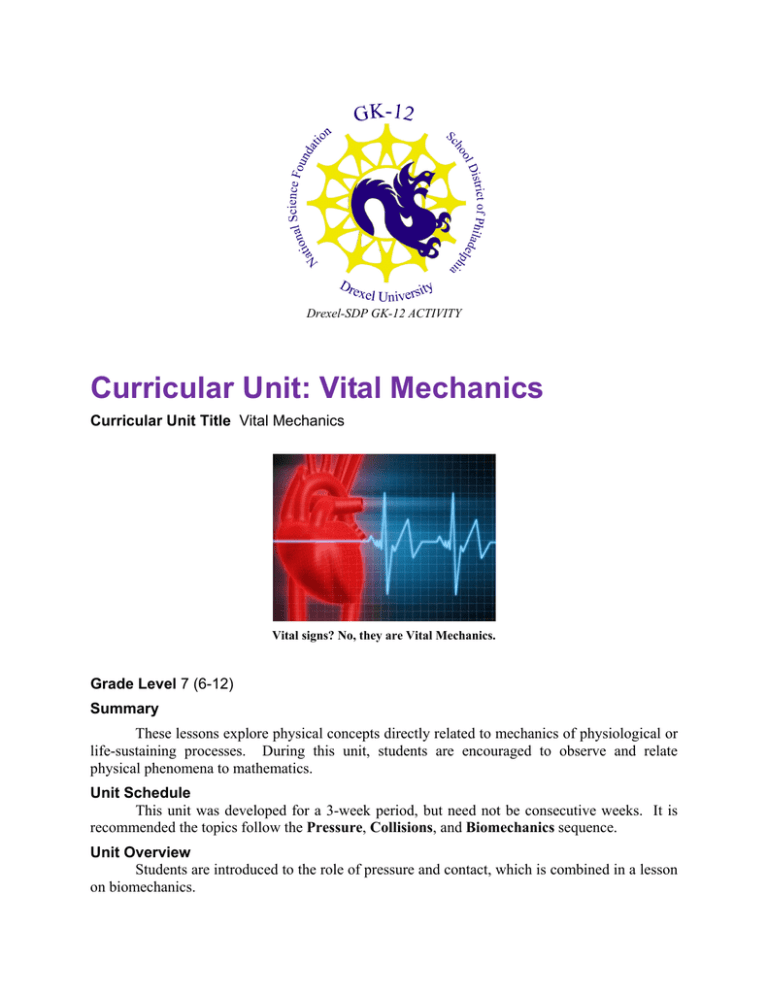
Drexel-SDP GK-12 ACTIVITY Curricular Unit: Vital Mechanics Curricular Unit Title Vital Mechanics Vital signs? No, they are Vital Mechanics. Grade Level 7 (6-12) Summary These lessons explore physical concepts directly related to mechanics of physiological or life-sustaining processes. During this unit, students are encouraged to observe and relate physical phenomena to mathematics. Unit Schedule This unit was developed for a 3-week period, but need not be consecutive weeks. It is recommended the topics follow the Pressure, Collisions, and Biomechanics sequence. Unit Overview Students are introduced to the role of pressure and contact, which is combined in a lesson on biomechanics. Engineering Connection Pressure governs many biological and environmental processes, and engineers in particular have used the concepts to their advantage for many years. Similar to the previous lesson, Collisions, the energy of particles on the molecular level can be changed dramatically with pressure (gas laws). On a larger scale, pressure influences particle movement due to gravity (water tower), chemical reactions (engine pistons), and even weather patterns (areas of high and low pressure). Earthquakes, tsunamis, and sound are all caused by pressure waves that propagate through solids, liquids, and gases, respectively. Elastic collisions are the cornerstone example of energy transfer, both on the molecular and macroscale levels. While chemistry and thermodynamics topics focus on the molecular level (gas laws, phase changes, etc.), collisions of solid objects are important considerations for those who work in fields involving ballistics, forensics, safety mechanisms, and athletics. Biomechanics is a blend of mechanical engineering and biomedical engineering disciplines that may combine clinical and laboratory environments. Many biochemical interactions in the human body depend on mechanical factors, and the biomechanical community seeks to relate various cause-and-effect scenarios that ultimately contribute to chronic diseases and health conditions. For example, blood vessels may change their structure to normalize mechanical factors like stresses on or within the vessel wall. Even though mechanics (forces and vessel deformation) play an easily identifiable role in this situation, the biology of the vessel depends on chemical signaling. Subject Area(s) Data Analysis & Probability, Measurement, Physical Science, Science & Technology Keywords mechanics, biomechanics, pressure, 2-D, 3-D, motion capture, contact, collision, algebra, trigonometry, baseball, energy, momentum Educational Standards • PA Science: o 3.1.7 – Unifying themes o 3.2.7.B – Apply process knowledge to make and interpret observations o 3.2.7.D – Know and use the technological design process to solve problems • PA Math: o 2.4.5.B – Use models, number facts, properties, and relationships to check and verify predictions and explain reasoning o 2.5.8.B – Verify and interpret results using precise mathematical language, notation and representations, including numerical tables and equations, simple algebraic equations and formulas, charts, graphs, and diagrams o 2.5.8.C – Justify strategies and defend approaches used and conclusions reached o 2.7.8.B – Present the results of an experiment using visual representations o 2.7.8.D – Compare and contrast results from observations and mathematical models o 2.8.8.B – Discover, describe, and generalize patterns, including linear, exponential, and simple quadratic relationships o 2.8.8.I – Generate a table or graph from a function and use graphing calculators and computer spreadsheets to graph and analyze functions o 2.11.8.B - Describe the concept of unit rate, ratio, and slope in the context of rate of change Related Lessons & Activities Lessons • Pressure, Collisions, Biomechanics Activities • Amp’d Up, Ramped Up, Play Ball Time Required 1.5 hours per lesson/activity combination Owner Drexel University GK-12 Program Contributors John C. Fitzpatrick, Mechanical Engineering and Mechanics, Drexel University Copyright Copyright 2008 Drexel University GK-12 Program. Reproduction permission is granted for nonprofit educational use.
